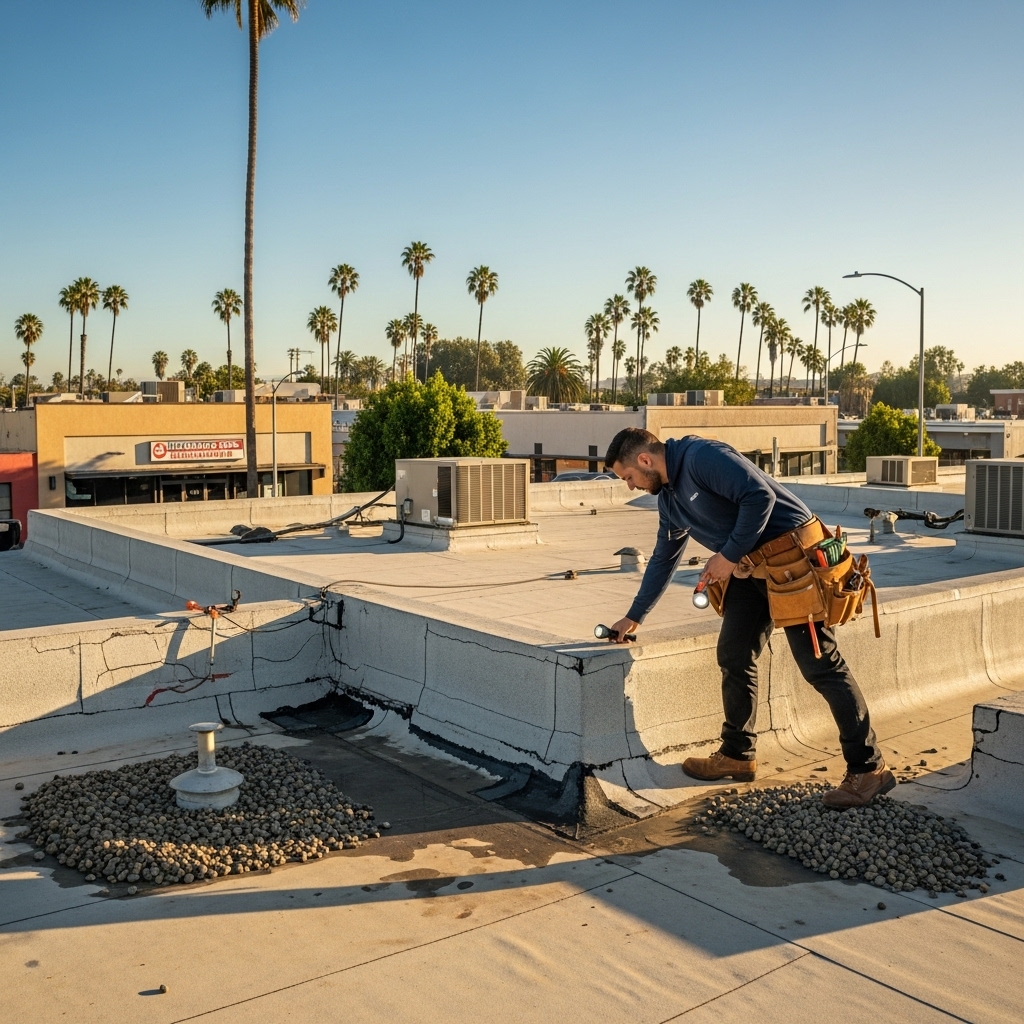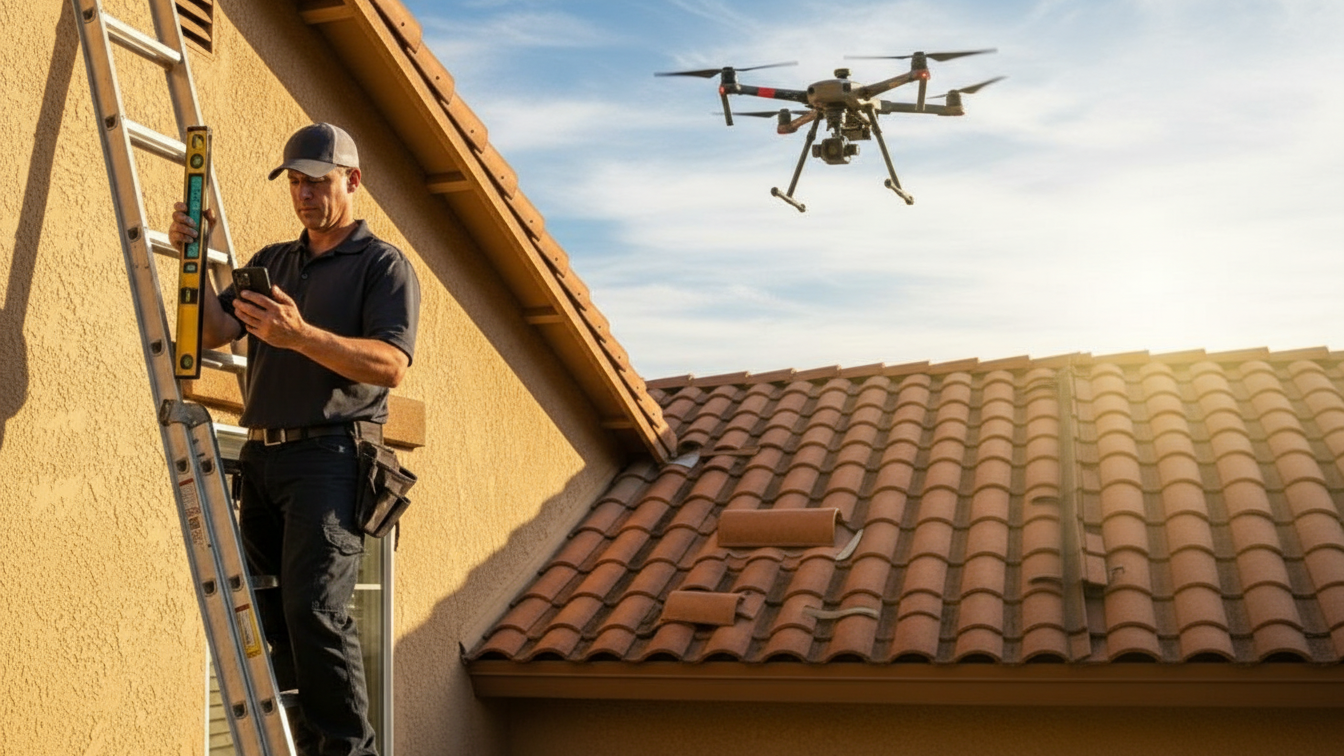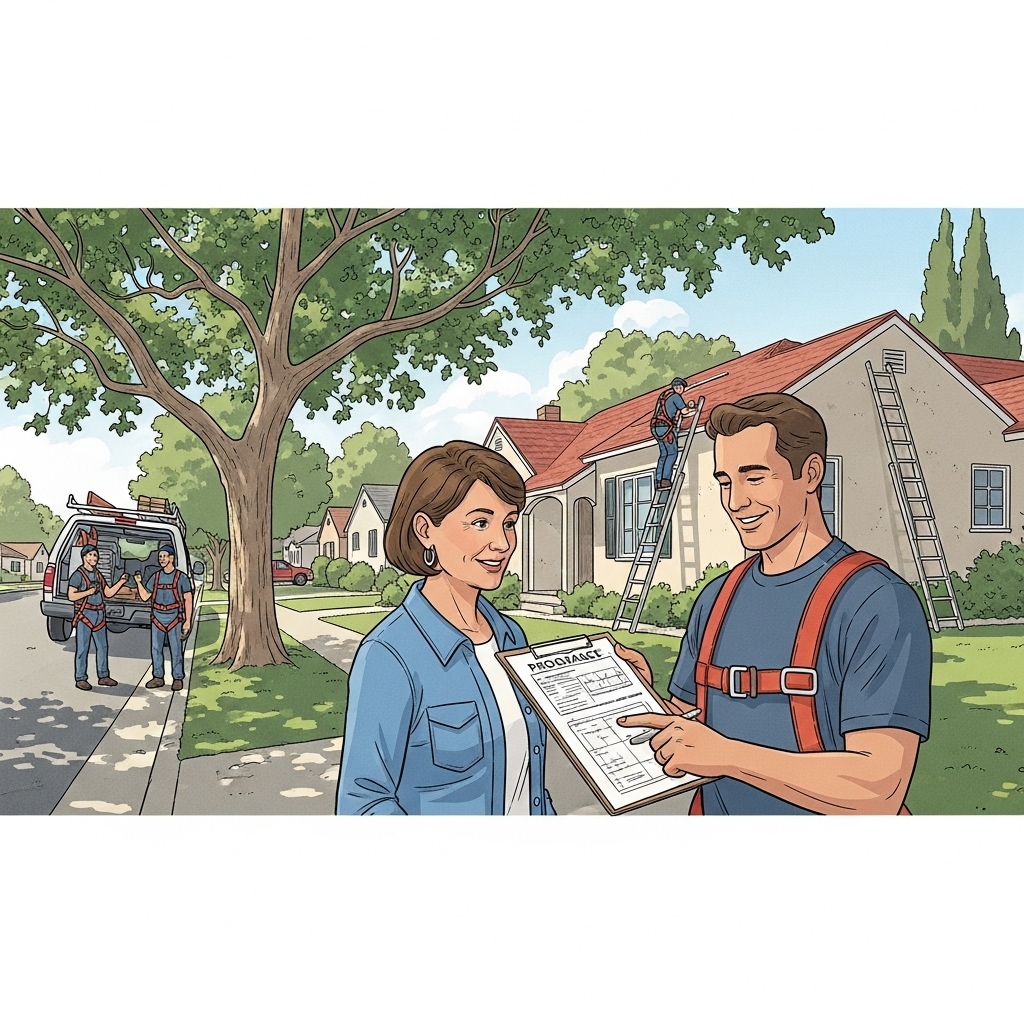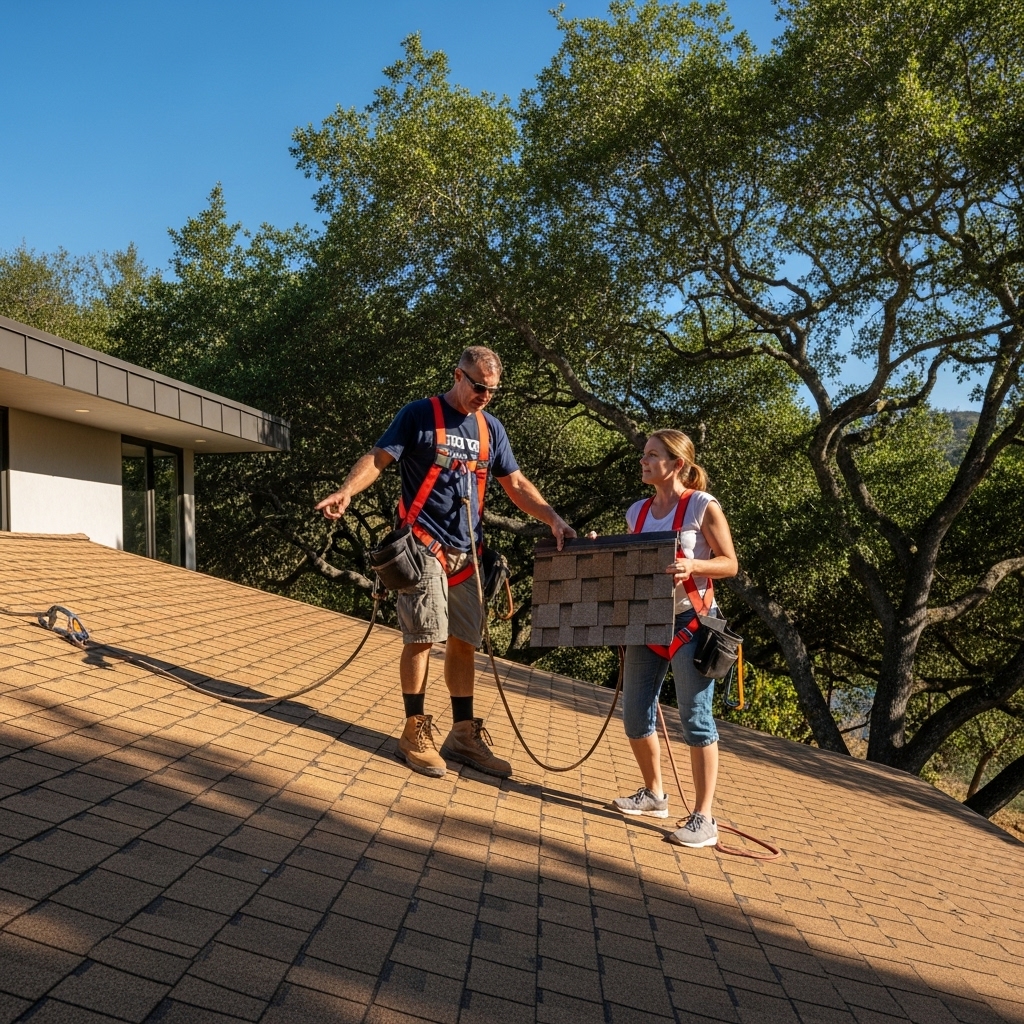When you live or operate a business in Tarzana, you get to know the rhythm of our Valley weather: long, sun-drenched stretches, a few spirited winter storms, and the kind of warm afternoons that make rooftop equipment hum and expand. Those conditions shape how flat roofs age, how they leak, and how we repair them. As a local who has spent years walking Tarzana rooftops from Ventura Boulevard storefronts to tucked-away cul-de-sacs near the foothills, I can tell you that effective flat roofing repair here is as much about reading the building as it is about the materials. The first step is understanding how heat, UV exposure, and occasional downpours affect seams, parapet walls, drains, and the transitions around skylights and HVAC curbs. And because repair plans should anticipate the next season, a thoughtful approach includes not only the patch today but the prevention that follows. For many properties, it also means planning future enhancements such as coatings or overlays that complement your existing flat roofing system.
Flat roofs on Tarzana homes and shops tend to fall into a few familiar categories: built-up roofs (BUR) with gravel, modified bitumen with cap sheets, single-ply membranes like TPO or PVC, and coatings applied over older systems. Each behaves a little differently under our sun. BUR can become brittle at the surface, especially around traffic paths where granules thin. Modified bitumen ages at laps and around penetrations. TPO and PVC like smooth, well-supported substrates, and their heat-welded seams need to remain clean and intact. Coatings, whether elastomeric, acrylic, or silicone, rely on preparation and thickness to bridge small cracks and resist ponding. When a leak appears, your building will hint at the culprit long before water shows up inside—blistering near parapet edges, dried sealant around a conductor head, or a slowly darkening patch near a scupper.
How Tarzana Sunlight Shapes Repair Priorities
Our famous bright skies are both a gift and a challenge. UV rays accelerate surface oxidation, while thermal cycling—those big temperature swings between mid-day and evening—makes materials expand and contract. Seams and terminations shoulder the brunt of that movement. A repair plan that holds up here should assume stress at edges and transitions. That is why we often reinforce not just the obvious hole or split but the nearby areas likely to move in the next heat wave. On modified bitumen, that might be a reinforced mastic and fabric detail over a widened area; on a single-ply system, it can be a new flashing strip, solvent clean and heat-welded, with attention to terminations at metal trims. The goal is always to rebuild elasticity at the most vulnerable points.
Diagnosing Leaks in Homes Versus Shops
In homes, leaks often appear as a faint stain near a corner or drip around recessed lighting. Residential flat roofs in Tarzana commonly meet stucco parapets and have fewer large penetrations, so leaks tend to originate at coping joints, stucco cracks where roof base flashings tuck in, or at skylights that have seen a few too many attic heat cycles. In shops and low-rise commercial buildings, we see a different profile: more penetrations, larger HVAC units, longer runs to drains, and traffic paths to rooftop equipment. A small crack near an equipment curb can become a funnel when condensate lines discharge nearby. That contrast means repair strategies differ. Homes reward careful attention to perimeter details and skylight curbs; shops demand robust reinforcements around penetrations and a check of drain function under realistic water flow.
Substrate and Moisture: What Lies Beneath
Nothing sabotages a flat roof repair faster than hidden moisture. Plywood or OSB decking can telegraph movement when it’s softened, and insulation can hold water like a sponge, releasing it slowly after a storm. Here in Tarzana, older roofs often have patch histories, so we read the surface for clues: slight depressions where old blisters once were, color changes indicating water pathways, or pockmarks where hail-like debris from wind events left tiny scars. When the surface hints at trapped moisture, a targeted cut-test or infrared scan can save time and recurring headaches. Repair then becomes a two-layer story: dry the substrate or replace damaged sheets, and only then address the membrane with compatible materials.
Choosing the Right Repair Materials
Compatibility matters. On BUR or modified bitumen, asphaltic mastics with polyester reinforcements create strong, flexible patches, but they need clean, primed surfaces and careful feathering at edges. On TPO or PVC, cleaning and heat welding are essential; chemical adhesives that work on other systems can compromise single-ply performance. For coated roofs, you match like with like when possible, but often a high-quality patch system can bridge a small breach and then be layered with a compatible coating to seal the repair and blend the surface. We often plan repairs so they lay groundwork for a future, larger upgrade, ensuring today’s solution doesn’t conflict with tomorrow’s coating or overlay.
Drainage, Ponding, and the Tarzana Downpour
It doesn’t rain often, but when it does, the water can come quickly. Ponding areas reveal themselves in the dust patterns after a storm—ringed stains, a tacky look where debris collected, subtle silt lines that trace the flow. Long-term ponding can weaken surfaces and strain seams. A durable repair approach not only plugs a leak but modifies the micro-topography if possible: tapered repairs that redirect water, relief cuts combined with reinforced overlays, or clearing and resealing scuppers and conductor heads to restore true drainage. Sometimes, the difference between a recurring leak and a lasting repair is as simple as rerouting a condensate discharge so it doesn’t dump onto a vulnerable seam.
Homeowner and Shopkeeper Maintenance Habits
Flat roofs reward small habits. A homeowner might check the roof after the first heat wave of the season, noting any lifted edges or brittle sealant. A shopkeeper can schedule a quick rooftop walk-through at the start of summer to confirm access paths are clean and nothing rubs against the membrane. Keeping leaves and seed pods out of drains and scuppers is a surprisingly powerful preventive step. Where HVAC lines cross the membrane, a bit of added protection—like pads or supports—can reduce abrasion over time. The right maintenance habits stretch the life of every repair and make the next storm a non-event.
Coordinating Repairs with Future Upgrades
Good repair planning looks ahead. If you are considering a reflective coating later, you’ll want repairs that accept that coating without peeling or bleeding. If your goal is to eventually transition from BUR to a single-ply, we may choose details that simplify that switch, such as upgrading edge metals or reworking certain flashings now. Mid-project conversations about long-term goals can save future disruptions. This is also where working with a local team pays off; we understand permit tendencies, how Tarzana’s heat stresses particular assemblies, and the seasonal windows when certain materials cure best on our rooftops. Around the middle of a project, it’s common to reassess the scope, confirm drainage improvements, and consider whether a strategic section could benefit from an additional layer or future-ready detail—especially if you plan to enhance your flat roofing with a high-reflectivity surface down the line.
What a Thorough Repair Visit Looks Like
A proper visit begins with listening. Where did you notice the issue, and under what conditions? Then we trace from the inside out, looking above the interior symptom, scanning the roof surface, and checking all upstream elements where water might enter. We test suspect seams, gently lift edges to spot loss of adhesion, and examine penetrations for dried or cracked sealant. After the repair, we often simulate rainfall—filling a drain bowl gradually or using controlled water flow to confirm our work. Each step is documented, not just to show what we fixed, but to highlight what to watch next season.
Timing Repairs Around Tarzana Weather
Our calendar favors early mornings for adhesion-sensitive repairs during summer and midday efforts during cooler months. Planning around heat is practical: adhesives and mastics behave better within certain temperature windows, and surfaces become easier to clean before dust kicks up. When rains are forecast, temporary dry-in measures can buy time for permanent work under clear skies. The key is calibrating scope and timing, so repairs cure properly and integrate with the existing system as intended.
Frequently Asked Questions
What are the most common flat roof leak sources on Tarzana homes?
Parapet-to-roof transitions, skylight curbs, and perimeter edge metals are frequent culprits. Heat and UV exposure stress these junctions, and even a hairline gap can draw in water under wind. Addressing the immediate breach and reinforcing nearby movement-prone areas yields longer-lasting results.
How do I know if my deck or insulation is wet?
Surface clues include soft spots, depressions that hold water, or recurring stains after each storm. A professional can confirm with cut-tests or thermal imaging. It’s crucial to dry or replace wet components before installing a surface repair that would otherwise trap moisture.
Can a repair prepare my roof for a future coating?
Yes. Choosing compatible mastics and reinforcing fabrics, smoothing transitions, and upgrading certain edge details can set the stage for a successful coating later. Discussing future plans early ensures today’s repair aligns with a long-term improvement path.
How quickly should I act after noticing a drip?
Right away. Even small leaks can travel and compromise insulation or decking. A prompt inspection can limit damage and often results in a smaller, cleaner repair. While you wait, protect the interior and avoid disturbing damp ceiling materials.
Are flat roof repairs messy or disruptive for businesses?
Most repairs are localized and scheduled to minimize disruption, often early in the day. We coordinate around store hours and critical equipment. Clear communication helps ensure safe access and keeps customers and staff out of work zones.
Will a repair change the appearance of my roof?
Repairs are designed to blend with the existing system where possible. On coated roofs, color touch-ups can reduce contrast. On membranes, new flashings are neatly integrated. Function comes first, but a tidy finish is always the goal.
How long will a typical repair last?
Longevity depends on the roof system, exposure, and maintenance. Repairs that address both the obvious breach and movement-prone surroundings generally last longer. Pairing the repair with simple upkeep, like clearing drains, extends performance considerably.
Talk With a Local Flat Roofing Specialist
If you are dealing with a persistent stain, a worrisome seam, or just want peace of mind before the next heat wave or storm, we are here to help. Let’s walk your roof, confirm the real cause, and design a repair that holds up to Tarzana’s unique mix of sun and sudden showers. Reach out today to schedule an inspection and get straightforward guidance tailored to your home or business. For solutions that protect your building now and set you up for future improvements, connect with our team and explore your options in flat roofing with a local, detail-focused approach.






